The striking parakeet bird actually describes several different species of small parrots distinguished by their long tail feathers. In the United States, the word “parakeet” refers to Melopsittacus undulatus, or the common parakeet. Another name for them is budgerigars, or “budgies.”
Common parakeets have two basic series of starting colors based on the alleles of their body. They’re either yellow-based or white-based. These series of colors provide the foundation for dozens of different mutations, which give some parakeets exceedingly rare coloring or markings. Throw into the mix the “dark factor,” which darkens the blue in a parakeet’s body feathers, and you’ll continue to create unique color combinations.
Keep reading to discover the world of parakeet colors, from the rarest to the most common. You may be surprised by the rarest colors!
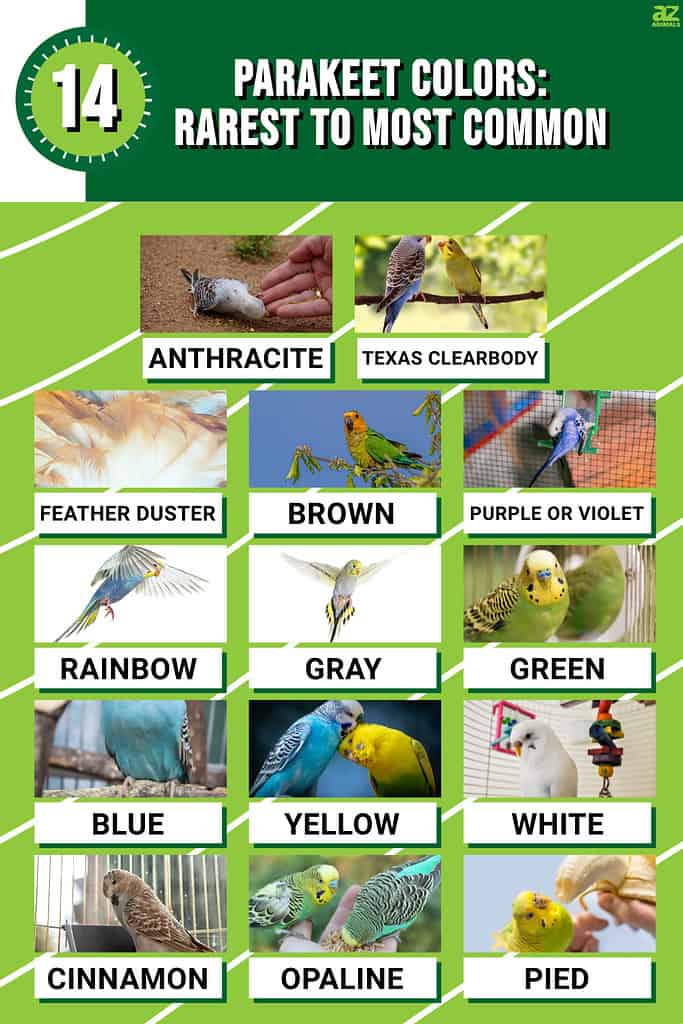
The 4 Rarest Parakeet Colors
These four colors are either extremely rare or on their way to extinction.
Anthracite
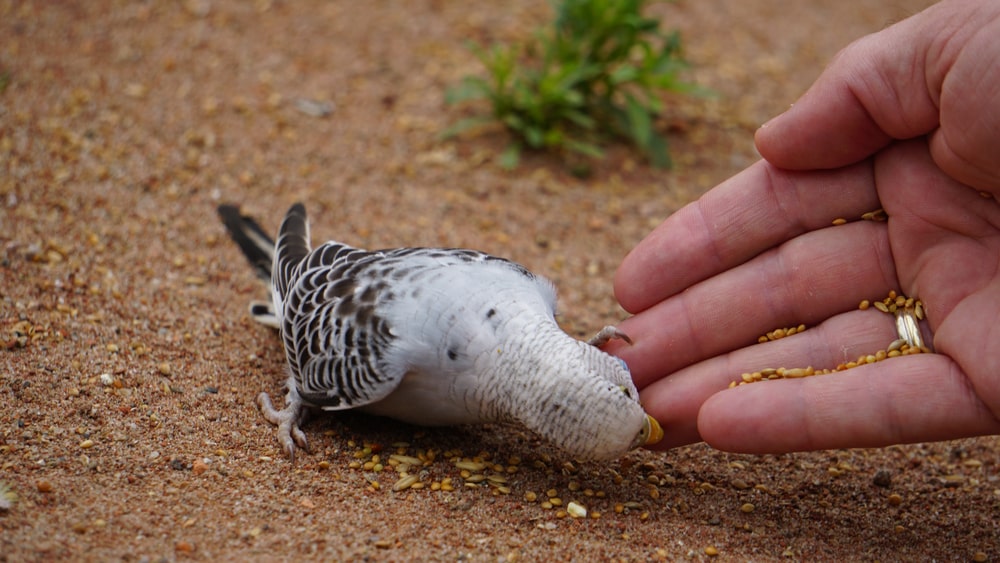
Anthracite color mutations remain extremely rare among all the budgie color mutations.
©Snoopy0107/Shutterstock.com
Similar to the mutation that happens in violet budgies, the Anthracite mutation and coloring give parakeets a black or deep gray look to their feathers. Many believe this mutation, based in Germany, is the re-emergence of the rare to extinct English Grey parakeet.
Texas Clearbody
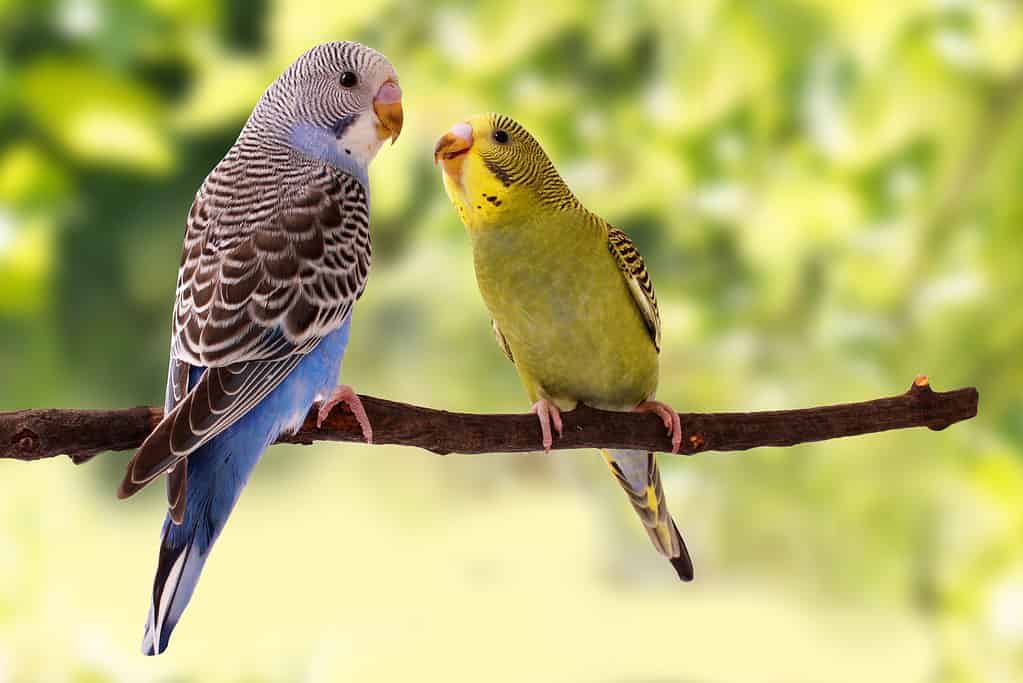
When talking to breeders about a yellow sex-linked Texas clearbody, make sure the bird in question has a colored beak and blue cheeks.
©Khmel/iStock via Getty Images
The sex-linked Texas clearbody budgie has a deceptively normal color despite its extreme rarity. At first glance, a Texas clearbody simply has a yellow body. In actuality, the bird possesses a pale green cast with blue “cheeks” and a colored beak. If it’s of the blue series, the bird will have a white body and a blue cast with black markings.
Feather Duster
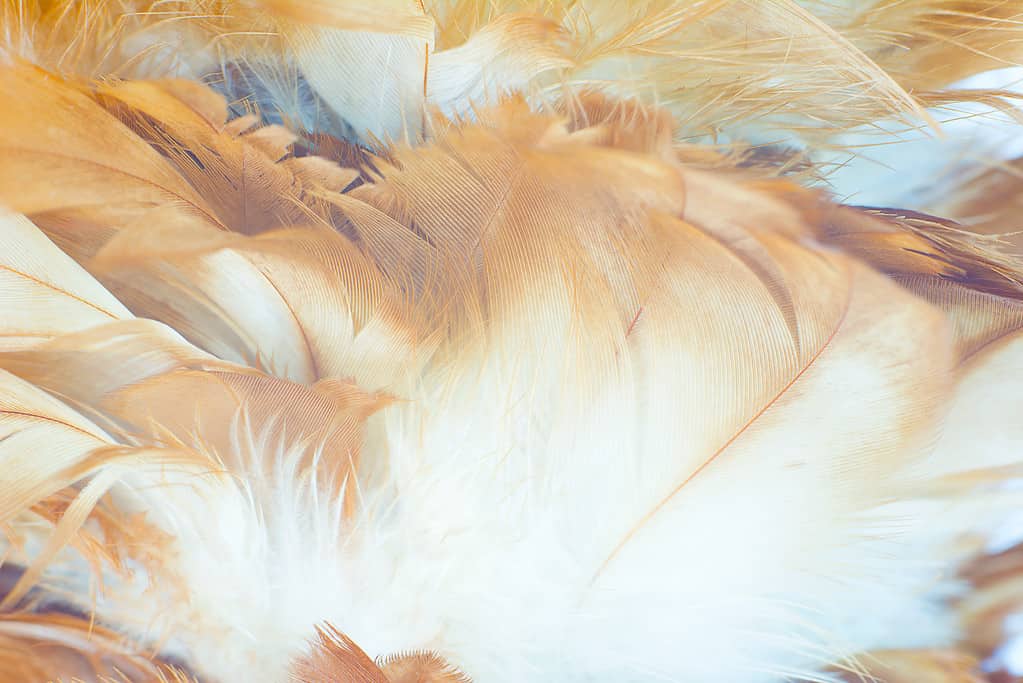
The feathers of a feather-dusted parakeet curl continuously and grow far beyond the normal length.
©nadtytok/iStock via Getty Images
Feather duster parakeets are not only gray or dulled versions of uncommon colors; they have curly feathers that grow so long, they always look overgrown! Don’t think these are just poorly taken care of birds, though. Even after grooming and molting, the feathers remain long. Unfortunately, the length and weight of the naturally curly feathers affect the bird’s quality of life, meaning that they’re unable to be as mobile as other parakeet species.
Brown
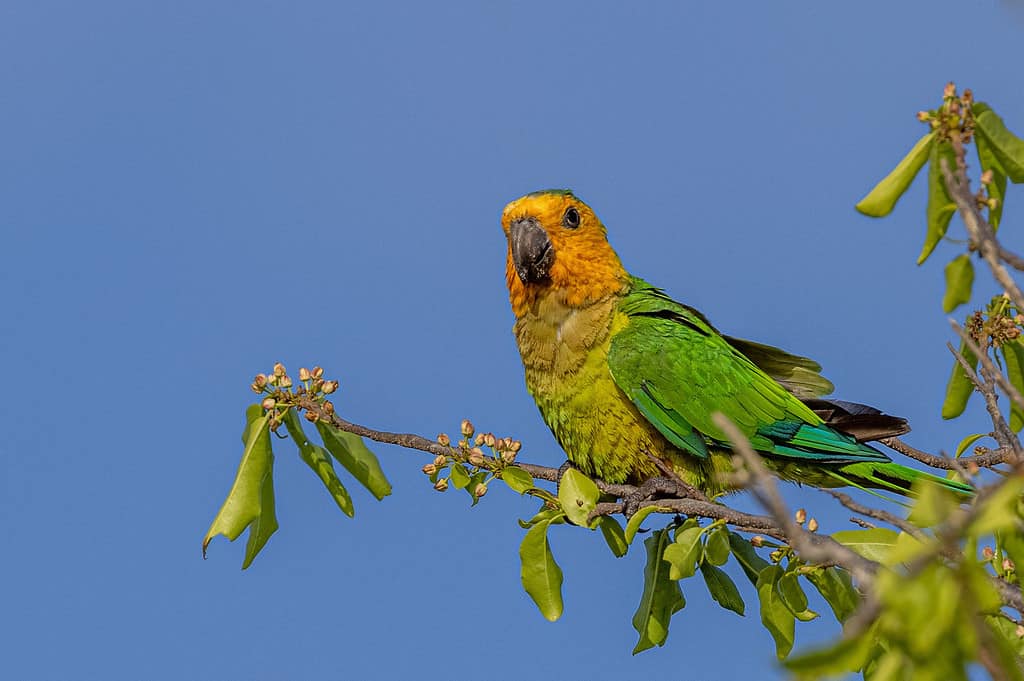
Brown-throated parakeets have a muddy orange-yellow color on their necks.
©Wirestock/iStock via Getty Images
While the brown-throated parakeet exists, brown is only an accent color. Rare species of parakeets have brown as the main color of their feathers thanks to an exclusively rare mutation of an autosomal-codominant relationship with a-Locus alleles. At this point in the world, many brown and sepia-colored parakeets have become extremely rare or extinct.
The 3 Uncommon Parakeet Colors
While not the rarest in the world, these colors aren’t commonly seen in pet stores and among breeders.
Purple or Violet
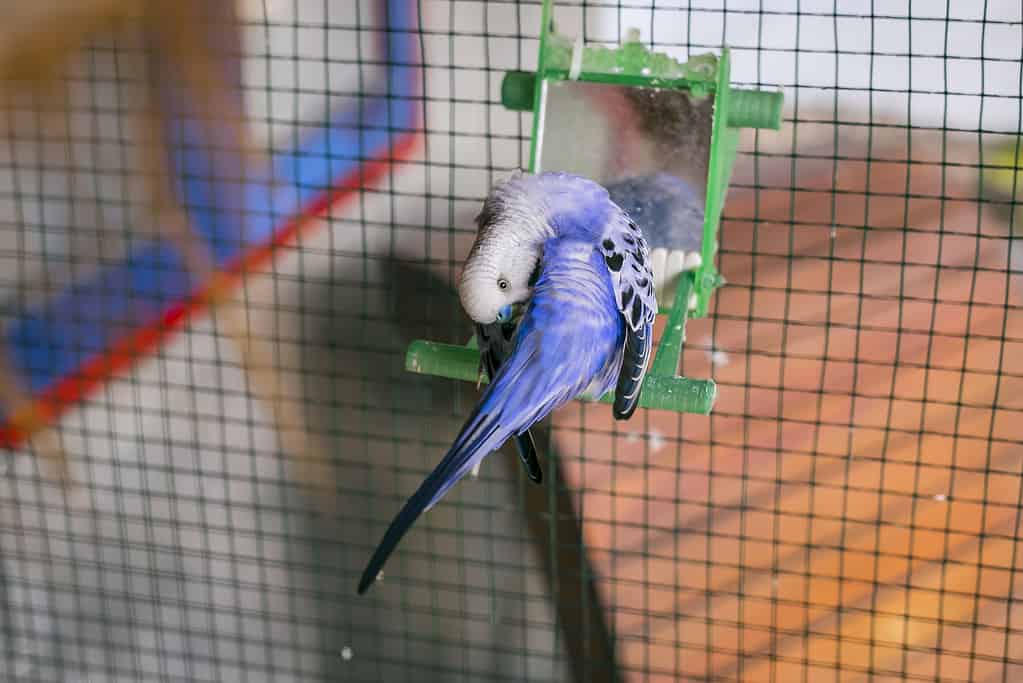
The purple budgie comes in a variety of hues, including a bluish-lavender with a blue beak.
©tarfullhd/iStock via Getty Images
While once rare, violet and purple parakeet colors occur more and more frequently thanks to the demand for unique coloring. Still, it’s a harder mutation to come by. Some of the common appearances are a violent, indigo, or lavender hue of purple in body feathers with a differently-colored head (like yellow or white).
Rainbow

Cross-breeding a yellowface II opaline with a clearwing opaline will produce a rainbow budgie.
©GlobalP/iStock via Getty Images
Not to be confused with the rainbow lorikeet, the rainbow parakeet comes in both classic rainbow and rainbow spangle coloring. Once thought to be one of the rarest colorings, the rainbow parakeet has become more common in the past 10 years. This bird has a combination of mutations in its genes to create the many different colors in its plumage.
Gray
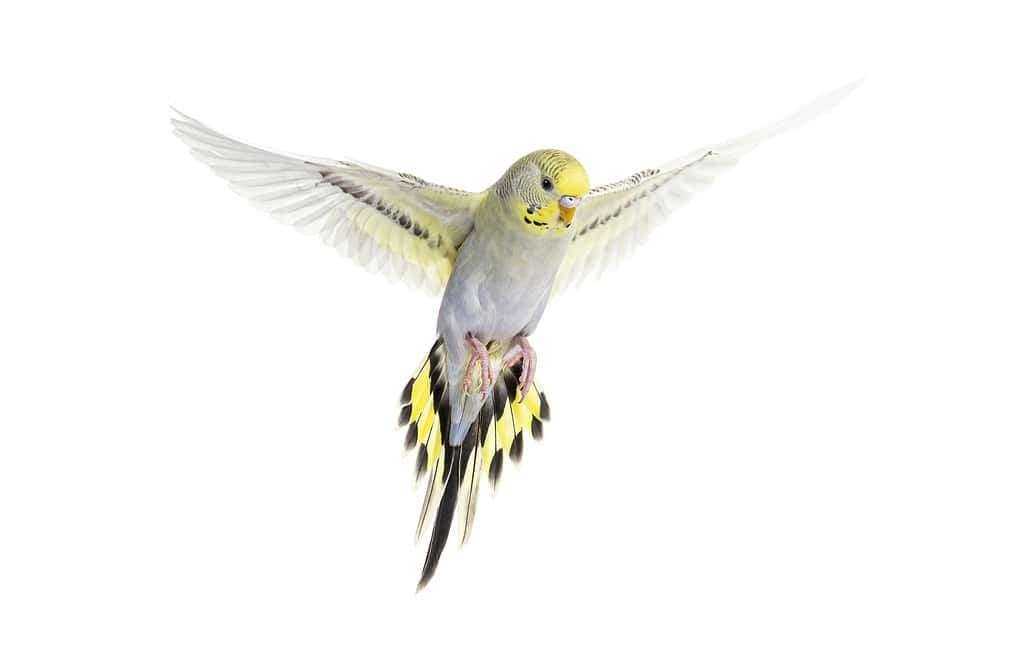
Gray budgies usually have at least one other accent color in their wings.
©GlobalP/iStock via Getty Images
Also known as “slate,” the gray color mutation occurs in blue-series budgies and has a significantly more prominent “dark factor” than the neighboring mutations of sky blue, cobalt, gray, and mauve. While history only shows one record of the slate mutation discovery in 1935, these birds remain rare among enthusiasts. Some breeders have taken to consistently trying to darken the feathering to produce a completely black budgie, but have not succeeded.
The 4 Most Common Parakeet Colors
Based on the yellow-based and white-based color foundations most parakeets have, green, blue, yellow, and white are the most common naturally occurring colors.
Green
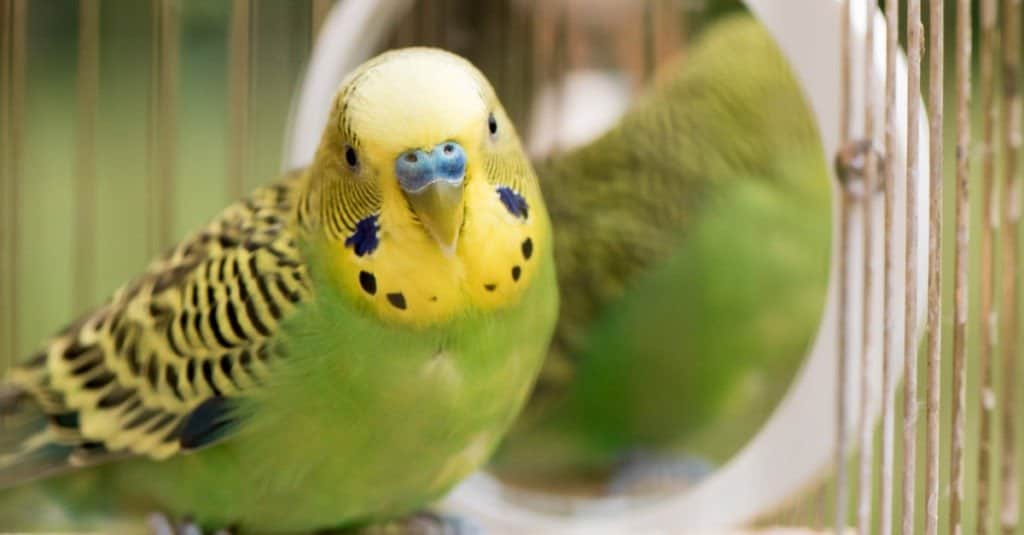
The normal-type light green budgie occurs most often in the wild.
©Vyaseleva Elena/Shutterstock.com
The wildtype color genetics of common parakeets is called light green, which is a combination of pigment layers of yellow and black. Blue light passes through the yellow feathers, giving it a green hue. Depending on the individual bird, the black melanin “dark factor” lightens or darkens the hue.
Green-colored parakeets have a yellow pigment with a structural color of blue. The markings vary depending on the type of pattern mutation. An opaline green parakeet and a normal green parakeet look startlingly different next to each other; the opaline has a much more vibrant green hue to its body.
Blue
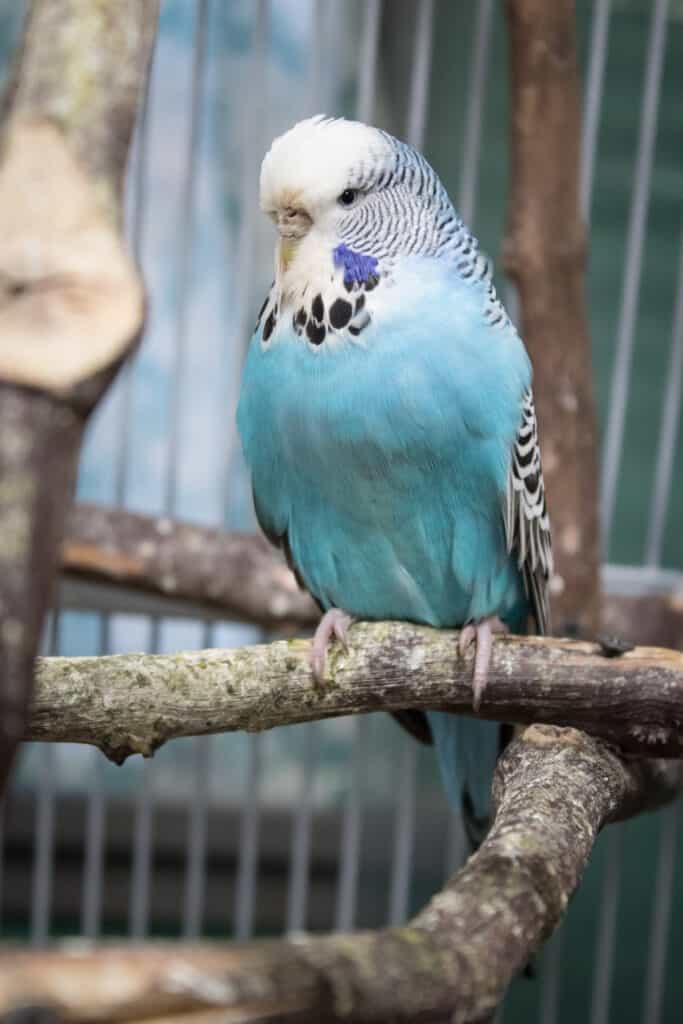
The light blue coloring of a budgie used to look rare, but generations of breeding have made the color more common.
©Jess Cowan/Shutterstock.com
While blue is among the more recessive traits in parakeets, blue coloring takes many different forms and patterns, resulting in a pretty common and naturally occurring color. If a parakeet doesn’t have full “blue” coloring, at least its tail feathers have a blue hue. Outside of the color mutations of Blue 1 and Blue 2, other coloring patterns that have blue accents or hues include:
- Clearwing.
- Greywing.
- Dark.
- Violet Blue.
Of course, hundreds of mutations spring off of the original yellow base and white base, resulting in unnamed patterns and colors that include blue.
Yellow

Yellow-based parakeets often have a body of feathers that morphs into green or another color.
©iStock.com/Werner Baumgarten
As one of the foundational colors of a parakeet’s features, yellow features in some parts of every parakeet that is yellow-based. This includes the yellowface parakeet, the goldenface parakeet, the dilute parakeet, the bronze fallow, and the spangle factor coloring. Yellow remains a primary color and tends to filter colored light, so many parakeets that have a yellow base pigment actually manifest in different colors.
White
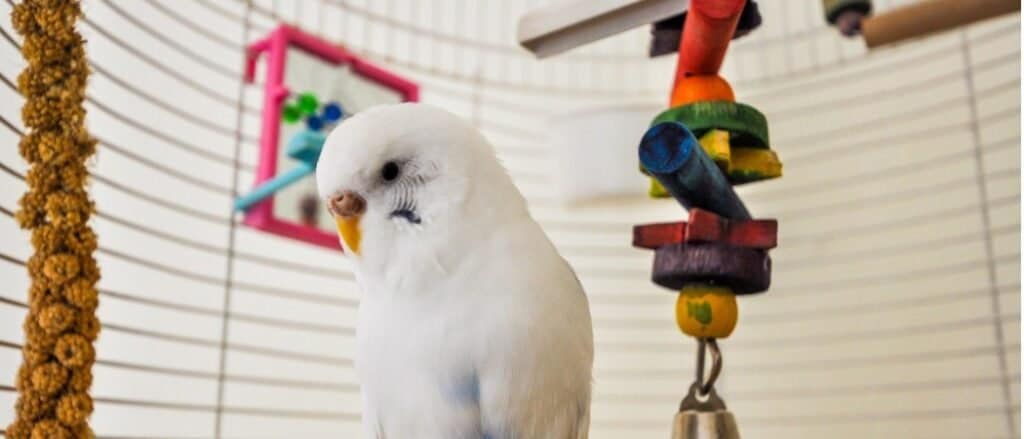
White parakeets, especially with some patches of blue, are a common color.
©JanJBrand/Shutterstock.com
The other pigment base, white is a common accent or secondary color to many parakeets. However, the fully albino parakeet — with a clear or orange beak and pink skin — has become exceedingly rare. Like in all animal species, albinism is a recessive inheritance pattern you can’t breed into a chick.
The 3 Markings and Patterns Parakeets Can Have
Cinnamon
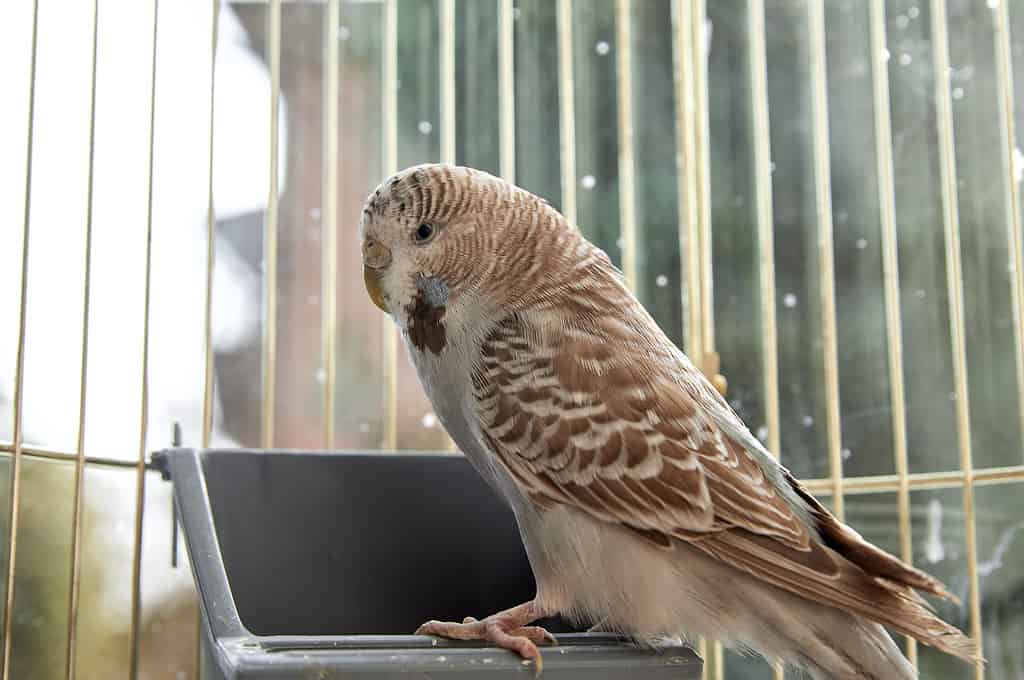
Cinnamon-patterned budgies have brown markings instead of black.
©Denys Ved/iStock via Getty Images
The hallmark characteristic of the rare cinnamon pattern mutation is the color of its markings. What would normally appear black or gray in normal mutations appears brown in the cinnamon variation on parakeets’ bodies. Cinnamons also have a different eye and skin color. Their eyes are the color of plums rather than black, and their skin is redder than a normal parakeet.
Opaline
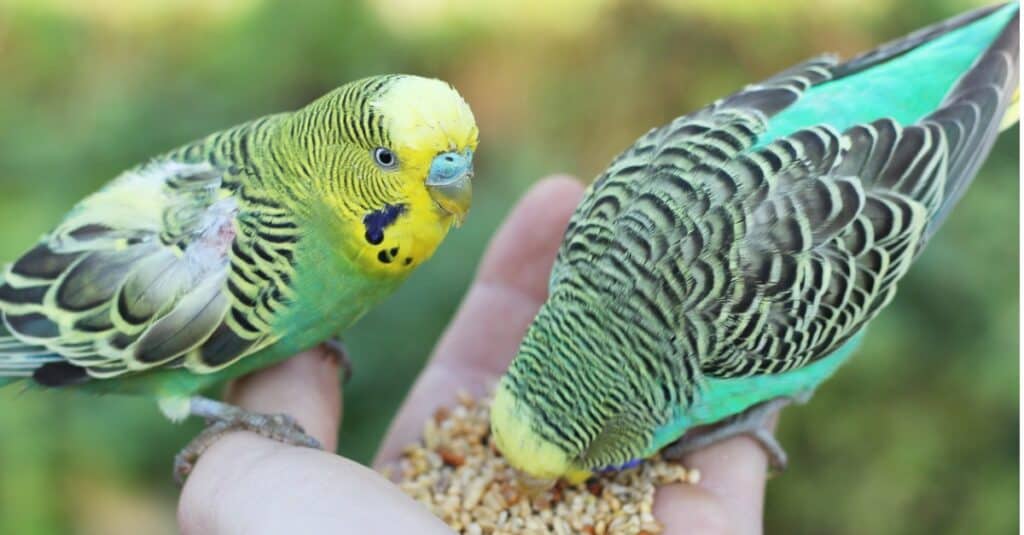
Opaline budgies have fewer stripes on their wings and heads than a normal type budgie does.
©iStock.com/urafoc
When you combine a yellowface II with a clearwing that both have opaline pattern mutations, you’ll produce a rainbow parakeet!
The opaline variety has several defining characteristics, including:
- The striations from the crown of the head to the bottom of the beck.
- The cap of the bird extends farther to create a “V” between the wings.
- Flight feathers have 10 primaries and 10 secondaries.
- The barbs of the Opaline’s wing have the same color as the body rather than the ground color.
- The young have white down feathers rather than gray.
- Opalines have a brighter body color than normals.
The opaline mutation also has thinner black stripes and markings compared to its normal counterpart, though it shouldn’t be used as the only judge of the mutation.
Pied
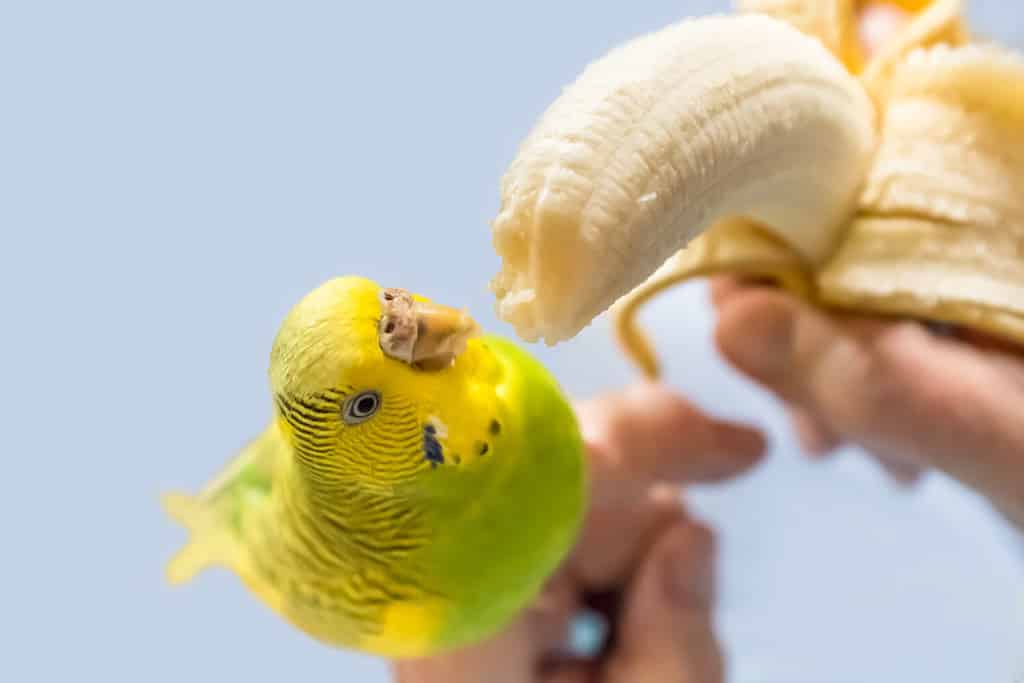
It’s not always easy to make out the small clear or white patches on a pied budgie.
©Christine Bird/Shutterstock.com
The most striking characteristic of a pied mutation in a parakeet is the irregular patch of clear features on their body, head, or wings. In the blue series, the patches take on a pure white color while in the green series, they have a yellow hue. In both situations, these patches happen because they’re completely devoid of melanin, or the black coloring pigment. Aside from the pied patches, the rest of the bird’s color is normal.
Feathers with the Colors of the Rainbow
Clearly, parakeets come in all colors of the rainbow. While black parakeets don’t exist yet, you can find nearly the full spectrum of the rainbow — including the rainbow itself — in the feathers of a parakeet.
Their color mutations happen both in the wild and while bred in captivity. As more breeders test the waters of different mutations and breeding, ornithologists may see even more new colors and marking patterns pop up soon.
With so many parakeet mutations, it’s hard to decide which is the prettiest. Which color mutation does your parakeet have?
Parakeet Colors: Rarest to Most Common
| Rank | Parakeet Color |
|---|---|
| 1 | Anthracite |
| 2 | Texas Clearbody |
| 3 | Feather Duster |
| 4 | Brown |
| 5 | Purple or Violet |
| 6 | Rainbow |
| 7 | Gray |
| 8 | Green |
| 9 | Blue |
| 10 | Yellow |
| 11 | White |
| 12 | Cinnamon |
| 13 | Opaline |
| 14 | Pied |
The photo featured at the top of this post is © iStock.com/Alina Lebed
Thank you for reading! Have some feedback for us? Contact the AZ Animals editorial team.






